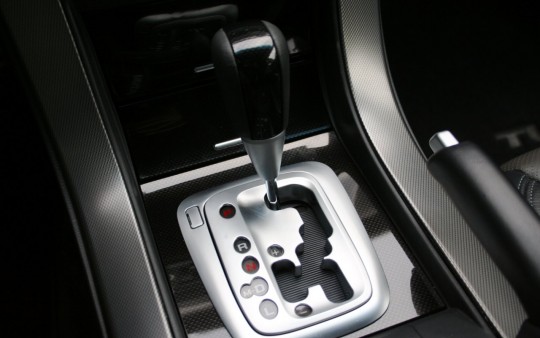Understanding Automatic Transmissions
To fully understand the operation of the automatic transmission, it is important to understand the basic role of its components.
An automatic transmission is composed of three major components:
·
Torque converter·
Planetary gear unit·
Hydraulic control unitThe torque converter provides a means of power from the engine to the input shaft of the transmission. It acts like an automatic clutch to engage engine torque to the transmission and also allows the engine to idle while the vehicle is standing still with the transmission in gear.
The planetary gear unit provides multiple gear ratios in the forward direction and one in reverse. The design includes two simple planetary gear sets and a common sun gear. These ratios are provided by the use of holding devices which hold members of the planetary set. These holding devices can be multiple clutches or brakes, brake bands or one-way clutches.
The hydraulic control unit regulates hydraulic pressure and shift points based on vehicle speed and throttle position. It is made up of a highly precision housing and spool valves which are balanced between spring tension and hydraulic pressure. The spool valves in turn control hydraulic passages to holding devices and regulate pressure.
In the following weeks, an indepth look into the components above will be posted on the KAPS website. First, an introduction into the types of automatic transmissions available.
Automatic transmissions can be basically divided into two types: those used in front engine, front wheel drive vehicles and those used in front engine, real wheel drive vehicles.
On a front wheel drive, when the transmission and the drive axle are combined in one unit, it is called a "transaxle."The engine on a front wheel drive is usually placed sideways with the transaxle tucked under it on the side of the engine that faces the rear of the car. Front axles are connected to the transaxle and provide power to the front wheels. Power flows from the engine, through the torque converter, to a large chain that sends the power through a 180-degree turn to the transmission that is alongside the engine. Then the power is sent through the transmission to the final drive where it is split and sent to the two front wheels.
On a rear wheel vehicle, the transmission is usually mounted to the back of the engine. A drive shaft connects the rear of the transmission to the final drive, located in the rear axle, and is used to send power to the rear wheels. Power moves from the engine through the torque converter and then through the transmission and drive shaft until it reaches the final drive, where it is divided and sent to the two back wheels.
Transmissions used in front wheel drive vehicles are designed to be more compact than transmissions used in rear wheel drive vehicles because they are mounted in the engine compartment. The basic purpose for either front or rear wheel drive automatics are the same. They share the same planetary gear train design used in the majority of automatics in production today.
sources:
http://www.procarcare.com/icarumba/resourcecenter/encyclopedia
http://www.catalogs.com/info/automotive/automatic-transmission.html
http://www.autoshop101.com
http://www.cdxetextbook.com
To read more about Automatic Transmissions and understanding their components, please view the following links:
Understanding Automatic Transmissions
Understanding Holding Devices for Planetary Gears
Understanding Torque Converters
Understanding Converter Fluid Flows
Understanding the Lock Up Clutch
Understanding the Valve Body 1/2
Understanding the Valve Body 2/2


